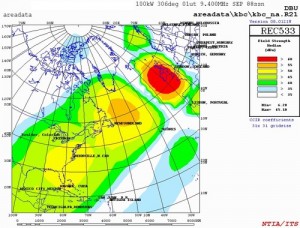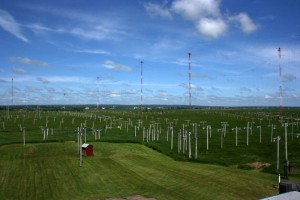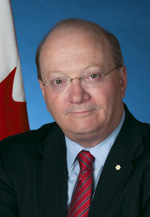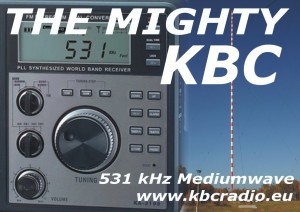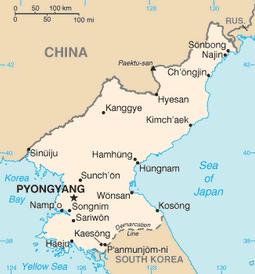This Sunday, from 00:00-02:00 UTC, The Mighty KBC will again broadcast 2 hours of music on the 31 meter band. This time, they will be testing on 9,450 kHz to avoid adjacent signal interference heard on 9,500 kHz last week.
They will also broadcast a special digital message at 01:30 and then again prior to the end of their broadcast. They have sent full details about the broadcast in a press release (below). Note that though the mode is different, the procedure of decoding the digital message is similar to the one WBCQ broadcast this year. We published a short primer on decoding the WBCQ message in May.
Here are the details on Sunday’s broadcast and how to decode the QPSK125 message:
(Source: The Might KBC)
The Mighty KBC will test to the USA on Sunday 11 November 2012 00.00 – 02.00 UTC on 9450 kHz!
Please join the Mighty KBC for a test of a digital text sent via a shortwave broadcast transmitter. This will take place during the next transmission to North America, Sunday 0000-0200 UTC, at approximately 0130 and just before the end of the broadcast at 0200.
All you need is a basic shortwave receiver (no SSB mode is necessary), and a basic personal computer. Using a patch cord, you will feed the audio out of the earphone jack (or line out) of your radio into the microphone jack of your PC. If you don’t have a patch cord, you can try placing the speaker of your radio close to the built-in microphone of a laptop PC.
You will also need software. There are several freeware or shareware programs used by the amateur radio community that decode digital text modes. One is FLDIGI, available from http://www.w1hkj.com .
After installing FLDIGI, pull down the Configure menu, then click Sound Card, and select the soundcard your PC is using.
You might also have to adjust your audio settings. In Windows 7, left click twice on the speaker icon in the lower right of PC display, then click Options, then click Properties, then click Recording, then click the input that works. Other operating systems will have different procedures. A good way to test your audio settings is to try to decode the radio amateurs using the PSK31 mode on 14070 kHz.
For the test digital text transmissions on Sunday, The Mighty KBC will be using the QPSK125 mode. On your software, your cursor should be centered on 1500 Hertz, where you will see the “waterfall” of the QPSK125 signal. You can decode the transmission while you receive it, or record the transmission and decode from the recording. The latter will give you more opportunities to perfect the technique.
The test to be transmitted will be a formatted html file. Copy it from <html> to (and including) </html>, and paste it to a text editor (such as Notepad in Windows). Save the file, using any file name, with the suffix .htm or .html. Then open the file in any web browser. If all goes well, this might be the first time you receive a shortwave radio broadcast in color!
In the future, an app will be developed to make this process simpler!

